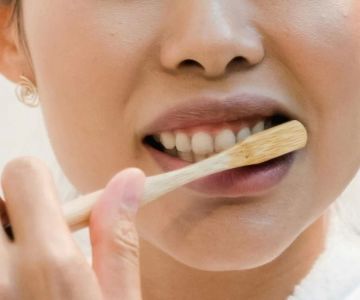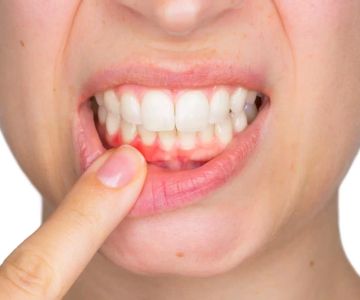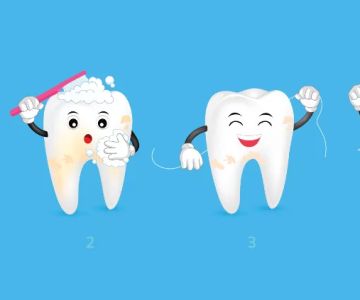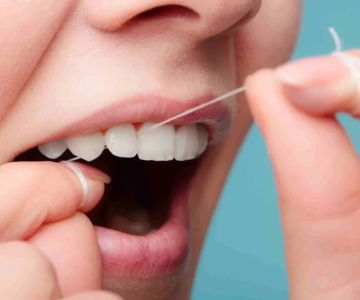1. Why Choose a Soft Toothbrush?
When it comes to brushing your teeth, a soft toothbrush can make all the difference. A soft-bristled toothbrush is gentle on your gums and enamel, helping to avoid irritation and erosion. Many people opt for harder bristles, thinking they will clean better, but this can actually damage the soft tissues in your mouth and lead to gum recession over time. If you have sensitive gums or teeth, or if you’re prone to gum disease, a soft toothbrush is a much safer and more effective choice for maintaining long-term oral health.
2. Soft Toothbrush vs. Hard Toothbrush: What’s the Difference?
The main difference between soft and hard toothbrushes lies in the bristle stiffness. Hard-bristled brushes may feel like they’re providing a deeper clean, but they can also cause damage to your gums and enamel, leading to increased tooth sensitivity. On the other hand, a soft toothbrush offers a gentler brushing experience, effectively removing plaque and bacteria while being less abrasive on your teeth and gums. Experts generally recommend soft brushes because they are more effective in preventing gum recession and enamel wear, especially when used in conjunction with proper brushing techniques.
3. Advantages of Using a Soft Toothbrush
Using a soft toothbrush offers a number of key benefits for your oral health. Here are just a few:
- Protects Gums: A soft toothbrush is much gentler on your gums, reducing the risk of irritation and bleeding.
- Preserves Enamel: Harder bristles can wear down tooth enamel, but a soft toothbrush is effective in cleaning without causing damage.
- Better for Sensitive Teeth: If you experience tooth sensitivity, a soft-bristled brush can help alleviate discomfort by not aggravating your teeth.
- Reduces Gum Recession: By using a soft toothbrush, you reduce the likelihood of your gums receding, which can expose tooth roots and cause pain.
Overall, a soft toothbrush provides a safer and more comfortable option for keeping your mouth clean and healthy.
4. Real-Life Examples of How a Soft Toothbrush Benefits Oral Health
Take the example of Jessica, who had been using a hard toothbrush for years. She noticed increased sensitivity in her teeth, especially when drinking cold beverages, and her gums often bled during brushing. After switching to a soft toothbrush, she saw immediate improvements. The bleeding stopped, and the discomfort significantly decreased within just a few weeks. Now, Jessica enjoys a much more comfortable brushing experience and her dentist has confirmed that her gums are healthier than before. This is just one of many real-life stories demonstrating the positive effects of switching to a soft toothbrush.
5. How to Choose the Right Soft Toothbrush for You
When choosing a soft toothbrush, there are a few factors to consider to ensure you’re getting the best one for your needs:
- Bristle Type: Ensure that the toothbrush you choose has soft bristles. Look for labels that specify "soft" or "gentle" bristles.
- Head Size: Select a toothbrush with a head size that fits comfortably in your mouth. A smaller head is ideal for reaching difficult areas like the back of the molars.
- Handle Design: Look for a handle that is easy to grip, especially if you have arthritis or limited hand mobility.
Remember, the best toothbrush for you is one that feels comfortable in your hand, reaches all areas of your mouth, and offers gentle cleaning without causing any discomfort. If you're unsure, consult with your dentist for personalized recommendations.







 Westgate Dental Arts3.0 (2 review)
Westgate Dental Arts3.0 (2 review) Coventry Family Dental4.0 (247 review)
Coventry Family Dental4.0 (247 review) Familia Dental3.0 (1028 review)
Familia Dental3.0 (1028 review) Dr. Daniel S. Fife, DDS4.0 (31 review)
Dr. Daniel S. Fife, DDS4.0 (31 review) Dentistry At Suburban Square: Michael I. Wollock, DMD4.0 (1228 review)
Dentistry At Suburban Square: Michael I. Wollock, DMD4.0 (1228 review) Comfort Care Dental4.0 (1156 review)
Comfort Care Dental4.0 (1156 review) The Importance of Oral Health Education During Pregnancy for a Healthy Pregnancy
The Importance of Oral Health Education During Pregnancy for a Healthy Pregnancy Why Skipping Dental Checkups Can Lead to Bigger Oral Health Problems
Why Skipping Dental Checkups Can Lead to Bigger Oral Health Problems Best Tips for Brushing Your Teeth Properly for Healthy Gums: Essential Techniques for Oral Health
Best Tips for Brushing Your Teeth Properly for Healthy Gums: Essential Techniques for Oral Health Advantages of Porcelain Dental Restorations
Advantages of Porcelain Dental Restorations How Can Diabetes Cause Tooth and Gum Problems? Preventing and Managing Oral Health Issues
How Can Diabetes Cause Tooth and Gum Problems? Preventing and Managing Oral Health Issues Healthy Habits for Promoting Good Oral Health and Hygiene: Tips for a Healthy Smile
Healthy Habits for Promoting Good Oral Health and Hygiene: Tips for a Healthy Smile